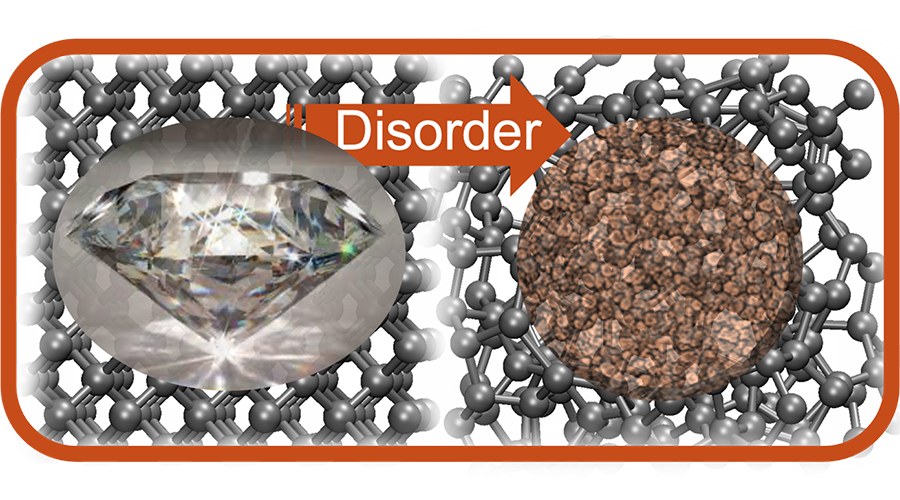When carbon atoms stack into a perfectly repeating three-dimensional crystal, they can form precious diamonds. Arranged another way, in repetitive flat sheets, carbon makes the shiny gray graphite found in pencils. But there are other forms of carbon that are less well understood. Amorphous carbon—usually a sooty black material—has no repetitive molecular structure, making it challenging to study.
Now, researchers at the University of Chicago’s Pritzker School of Molecular Engineering (PME) have utilized a new framework for understanding the electronic properties of amorphous carbon. Their findings let scientists better predict how the material conducts electricity and absorbs light, and were published in Proceedings of the National Academy of Sciences (PNAS).
“We need to understand how disordered carbon works at a molecular level to be able to engineer this material for applications like solar energy conversion,” said Giulia Galli, the Liew Family Professor of Molecular Engineering and Professor of Chemistry at the University of Chicago. Galli also holds a senior scientist appointment at Argonne National Laboratory, where she is the director of the MICCoM center.
For decades, scientists have modelled the way the atoms move in amorphous carbon using the laws of classical mechanics—the set of equations that describe, for example, how a car accelerates or how a ball falls through the air. For some heavy atoms of the periodic table, these classical equations are a good approximation to accurately capture many of the materials’ properties. But for many forms of carbon, and amorphous carbons in particular, the team led by Galli has found that using these classical equations to describe the movement of atoms falls short.
“Amorphous carbon has many properties that make it valuable for a number of applications, however modeling and simulating its properties at the fundamental level is challenging,” said postdoctoral research scholar Arpan Kundu, PhD, the first author of the paper.

